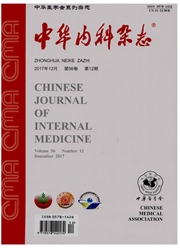

 中文摘要:
中文摘要:
目的探讨慢性粒细胞白血病(CML)患者骨髓细胞中Wilms瘤抑癌基因(WT1)的表达水平及其临床意义。方法建立实时定量RT-PCR方法,采用Light Cycler PCR仪检测了46例(109份骨髓细胞cDNA标本)CML患者和23例非白血病患者骨髓细胞中WT1及内参β胆色原脱氢酶(GAPDH)的表达水平,以WT1N=(WT1拷贝数/GAPDH拷贝数)×10^4计算WT1表达水平。结果23份CML加速期与22份CML急变期患者骨髓细胞中WT1N的中位表达水平分别为103.71和129.44,明显高于64份CML慢性期和对照组(分别为3.44和1.47,P〈0.01),对照组与CML慢性期之间WT1基因表达差异无统计学意义;CML加速期与急变期之间WT1基因表达差异也无统计学意义(P〈0.05)。WT1基因表达水平与BCR/ABL融合基因表达水平具有一定的相关性。对其中7例CML患者行异基因骨髓移植前后动态检测WT1上升可提示白血病复发。结论CML患者加速急变期骨髓细胞中WT1基因表达升高,具有参考意义。
 英文摘要:
英文摘要:
Objective To investigate the clinical significance of Wilms tumor gene (WT1) expression levels in the bone marrow (BM) of chronic myelogenous leukemia patients. Methods Real-time quantitative retroverse polymerase chain reaction (RQ-RT-PCR) method was established for detecting WT1 and GAPDH expression levels in the BM of 109 CML and 23 non-leukemic patients with Light Cycler. Normalized WT1 expression level (WT1N) was determined as a ratio between WT1 and GAPDH expression times 104. Results The median expression levels of WT1N in 23 CML patients of accelerate phase (CML-AP) and 22 CML patients of blast crisis (CML-BC) were statistically higher than those of 64 CML patients of chronic phase(CML-CP) and 23 non-leukemic controls ( 103.71 and 129. 44 vs 3.44 and 1.47 ). No statistic differences were found between the CML-CP group and control group, nor between the CML-AP group and CML-BC group. Furthermore, the WT1N levels were correlated to the BCR/ABL fusion gene expression levels, Dynamic change of WT1N levels in 7 CML patients before or after allo-geneic bone marrow transplantation showed that WT1 expression levels could predict relapse of leukemia, Conclusion WT1 expression levels in CML patients in accelerate phase or blast crisis were strikingly higher than those in non-leukemic patiens or CML patients in chronic phase, in whom WT1 expression was undectable or showed low expression. WT1 gene could be an useful marker for detecting MRD and evaluating therapeutic efficacy in CML.
 同期刊论文项目
同期刊论文项目
 同项目期刊论文
同项目期刊论文
 期刊信息
期刊信息
